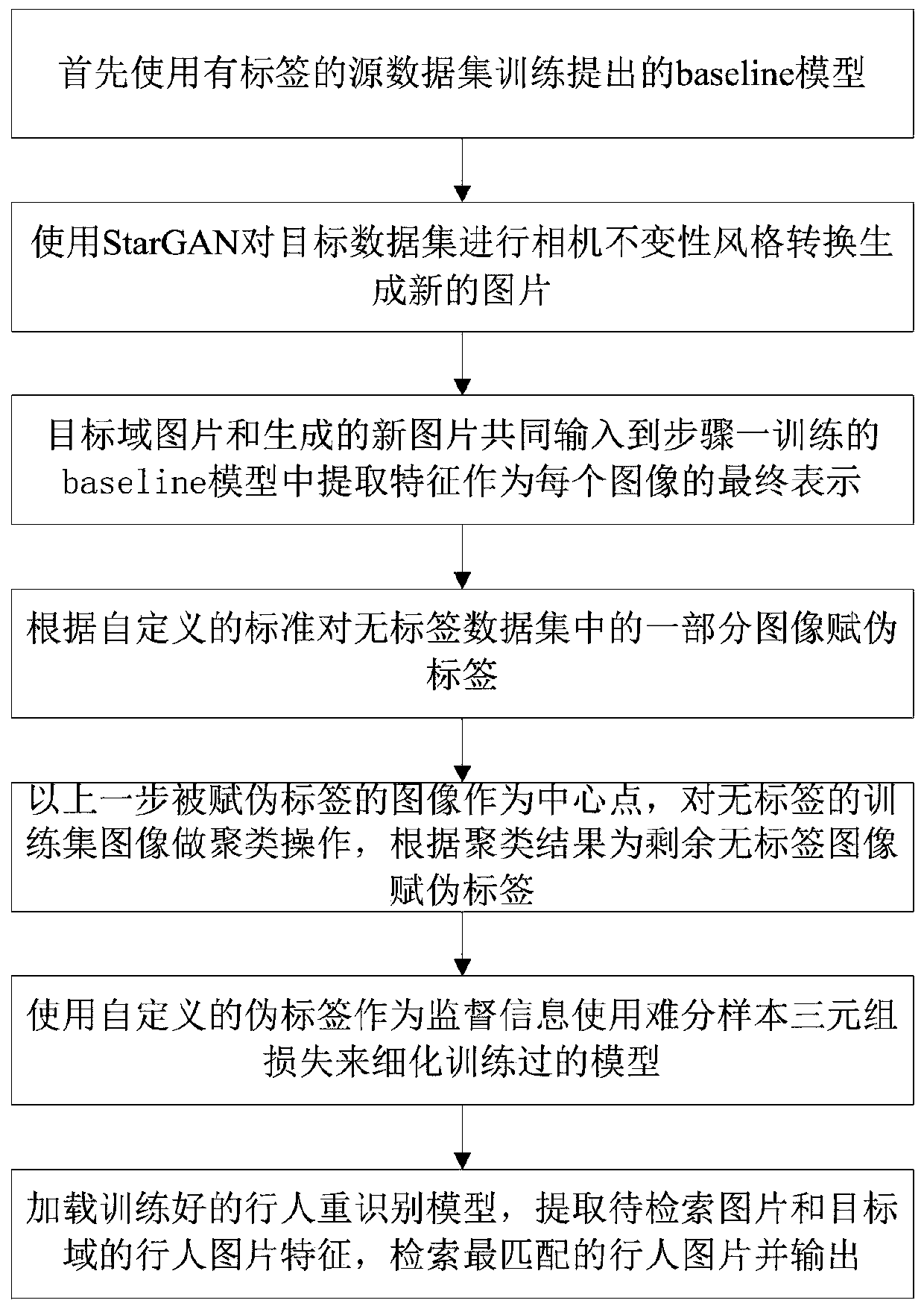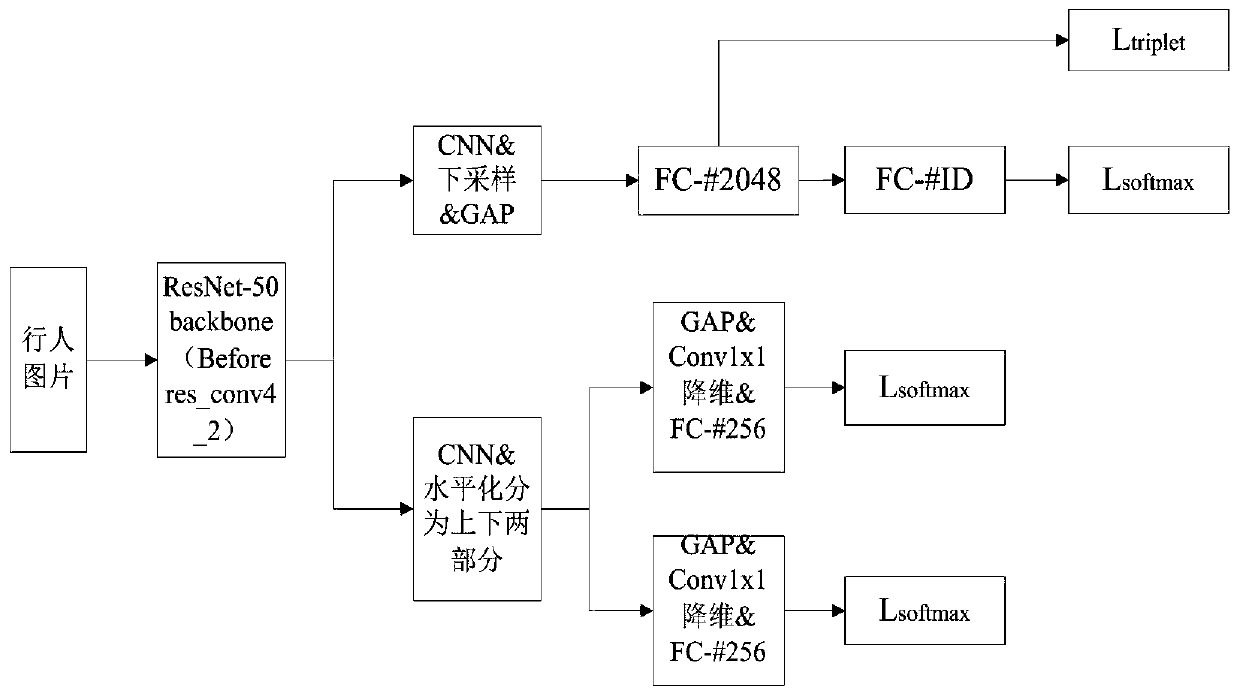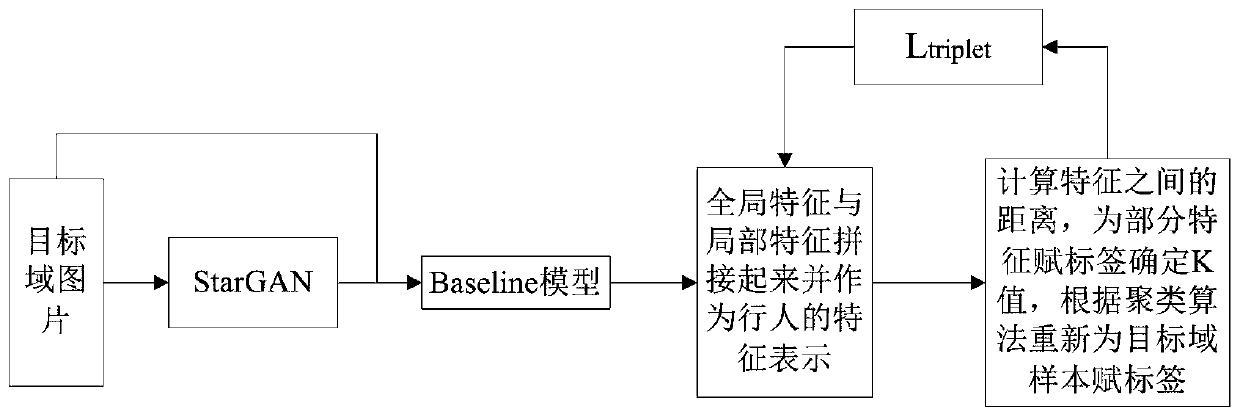Unsupervised cross-domain pedestrian re-recognition method based on clustering
A pedestrian re-identification and unsupervised technology, applied in the field of image recognition, can solve problems such as occlusion, time-consuming, and laborious, and achieve the effect of improving cross-domain performance and strong generalization ability
- Summary
- Abstract
- Description
- Claims
- Application Information
AI Technical Summary
Problems solved by technology
Method used
Image
Examples
Embodiment Construction
[0032] The present invention will be described in further detail below in conjunction with accompanying drawing, as figure 1 Shown, the present invention specifically comprises the following steps:
[0033] Step 1: Input the labeled source domain image into the designed network model for pre-training to obtain the baseline model.
[0034] Such as figure 2 Shown: Use ResNet50 pre-trained on ImageNet as the backbone network, retain the part before the backbone network res_conv_4_2, and divide the subsequent part into two independent branches, sharing a similar architecture to the original ResNet-50, two branch structures Similar but with different downsampling rates, including global branch and local branch, the global branch focuses on the overall feature representation, the global branch removes the last fully connected layer of the original ResNet-50, adds two new fully connected layers, and the dimension of the first layer It is 2048 dimensions, called FC-#2048. The dimen...
PUM
 Login to View More
Login to View More Abstract
Description
Claims
Application Information
 Login to View More
Login to View More - R&D
- Intellectual Property
- Life Sciences
- Materials
- Tech Scout
- Unparalleled Data Quality
- Higher Quality Content
- 60% Fewer Hallucinations
Browse by: Latest US Patents, China's latest patents, Technical Efficacy Thesaurus, Application Domain, Technology Topic, Popular Technical Reports.
© 2025 PatSnap. All rights reserved.Legal|Privacy policy|Modern Slavery Act Transparency Statement|Sitemap|About US| Contact US: help@patsnap.com



